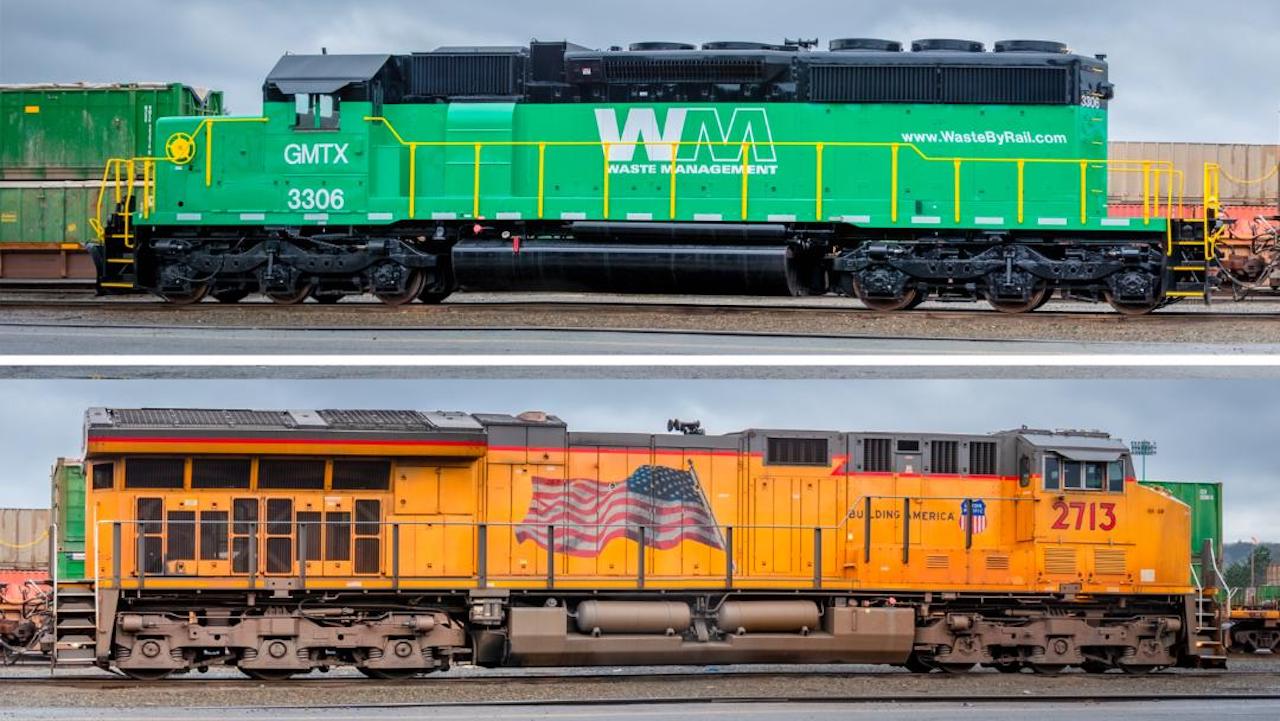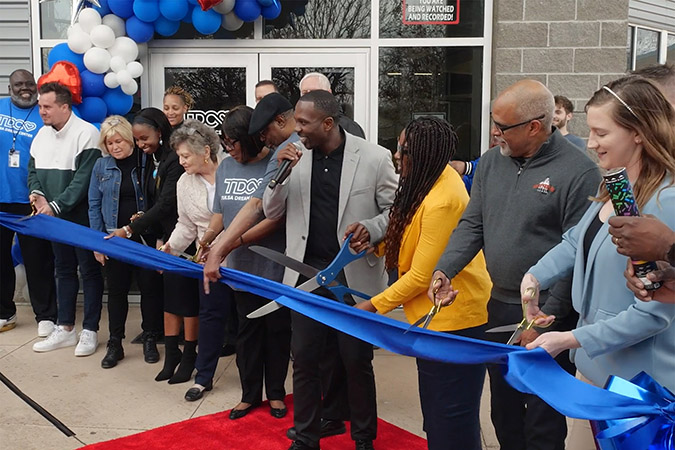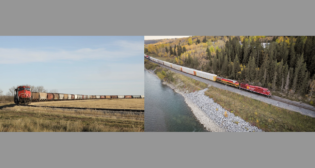
Class I Briefs: UP, BNSF, CN
Written by Carolina Worrell, Senior Editor
Union Pacific (UP) moves more containers for WM (formerly Waste Management) in 2022 than in any other single year. Also, BNSF donates toward the purchase of a second location for the Tulsa Dream Center; and CN launches new tool to help its customers calculate greenhouse gas (GHG) emissions.
UP announced April 14 that the railroad moved more containers for WM in 2022 than in any other single year.
According to the Association of American Railroads (AAR), rail is the most fuel-efficient way to move freight over land—cutting GHG emissions by up to 75% compared to commercial truck, and one UP locomotive can move a ton of freight 463 miles on a single gallon of fuel, the Class I said.
According to UP, transporting waste by rail from Seattle to Arlington, Oreg., is part of WM’s work to minimize its carbon footprint. And, as an added bonus, UP is a WM customer, using the company’s disposal facilities as a repository for hundreds of thousands of tons of waste collected annually from its rail yards.
“Working together is a great way for UP and WM to each achieve our environmental stewardship goals,” said UP Director, Marketing and Sales Darren Wisniski. “We’re helping transport waste in a carbon friendly way.”
As part of its Building a Sustainable Future 2030 approach, UP says it aims to “divert waste from landfills while enhancing recycling and waste management initiatives.” This shared interest in reducing GHG, the Class I adds, has become a “mutually beneficial avenue for both UP and WM to grow business in a cost-effective and environmentally responsible way.”
UP says it continues actively pursuing projects that involve shipping waste and recyclables, including scrap paper, recyclable plastics and fly ash, by rail beyond the Seattle area.

BNSF announced April 14 that it has donated toward the purchase of a second location for the Tulsa Dream Center, a community center that serves Tulsans with programs to help build economic empowerment, provide access to education, increase health and wellness, and foster leadership.
In addition to serving members of the community who fall below the poverty line, the Tulsa Dream Center, BNSF says, has a long-term mindset and aims to “do life” with the people and families they touch. With their success in North Tulsa, the organization saw there was a need to expand.
After trying to purchase land that was adjacent to the original Tulsa Dream Center without luck, the organization found an existing community center in West Tulsa that needed an owner. With help from the BNSF Railway Foundation and local supporters, the Tulsa Dream Center was able to make the purchase. The new west campus includes a gym, clinic, kitchen, warehouse and classrooms.
“Given all that the Tulsa Dream Center is doing in the community, and the close proximity to our rail line, we want to be invested here,” said Jeanelle Davis, BNSF’s Executive Director of Public Affairs for Texas and Oklahoma.
“The Tulsa Dream Center listens to what the community wants and needs, and they deliver that,” Davis added. “That is something really special and we are proud and excited to help the Tulsa Dream Center ‘double the dream.’”
CN announced April 17 the launch of My Carbon Emissions, a new self-service sustainability tool available on the CN One eBusiness platform that provides customers with a detailed report of their estimated GHG emissions based on all their loaded shipments moved on the railroad, as well as the emissions avoided by choosing rail over truck.
These insights into the environmental benefits of shipping via CN’s transcontinental network, the Class I says, “empowers customers to make data driven decisions that support their climate objectives.”
CN was first to launch the Carbon Calculator, 13 years ago, to give customers visibility into their estimated GHG emissions and emissions savings using rail transportation.
“As more companies are looking to quantify, and ultimately, lower their transportation GHG emissions, the information now available will allow customers to easily access and understand part of their Scope 3 emissions,” said CN. It will also help identify opportunities for them to make more environmentally friendly transportation decisions, demonstrating CN’s commitment to “innovate and offer solutions for its customers’ evolving needs.”
“Rail has a tremendous potential to reduce the environmental impact of transportation and we are pleased to offer this enhanced tool to our customers, who are at the heart of what we do,” said CN Executive Vice President and Chief Marketing Officer Doug MacDonald. “Moving long-haul freight by train instead of truck can reduce GHG emissions by up to 75% and CN remains a leader in the North American rail industry, by consuming approximately 15% less locomotive fuel per gross ton mile.”
CN is part of the climate solution and has set science-based targets to reduce its Scope 1 and 2 GHG emissions intensity by 43% and Scope 3 emissions intensity for fuel- and energy-related activities by 40%, by 2030 from a 2019 base year. The railroad says it is also committed to setting a net-zero 2050 carbon emission target aligned to a 1.5°C scenario. CN’s sustainability leadership is recognized through the inclusion in the Dow Jones Sustainability World Index (DJSI) and CDP’s Climate Change A List.



